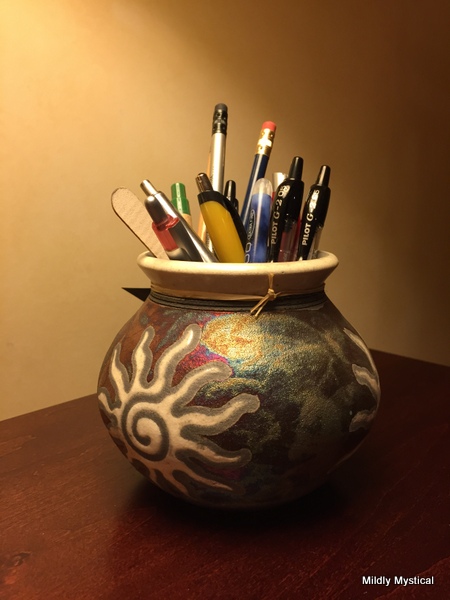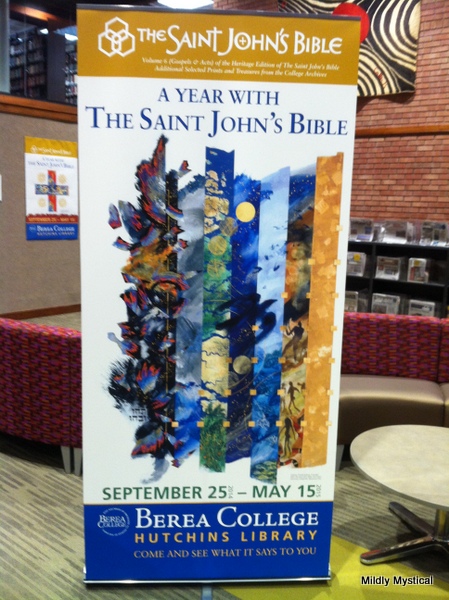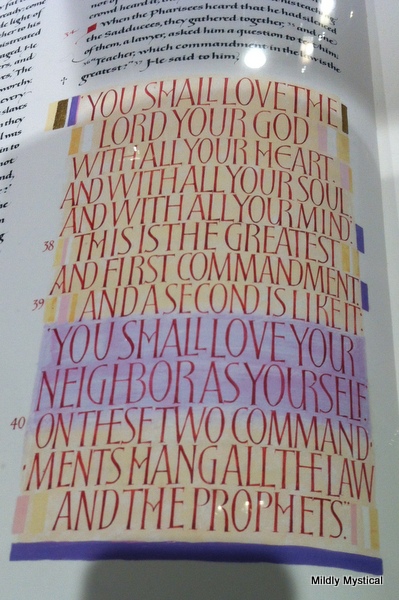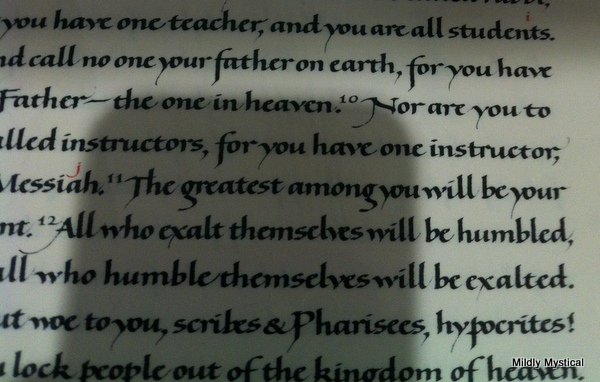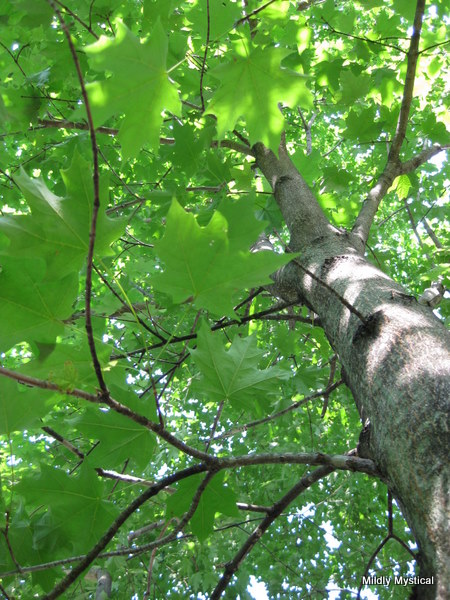The vase where I keep my pens is a pleasure to use. Not only is it beautiful, it reminds me of the friend from whom it was a gift. And it keeps my pens from rolling away, or being buried under papers and books.
Yet I recently found myself finished using one of my favorite pens and placing it beside rather than in the vase, hoping it wouldn’t roll off the tabletop. The vase was jammed with writing implements I never use—pens with dried or blotchy ink that won’t improve with time—and there was no room for the one I truly cared about finding again when I needed it. It was a lot like having no pen holder at all.
It’s easy not to notice as trivial items encroach on limited space. Because the change is gradual, it’s almost invisible. The same thing happens as our days, our conversations, our thoughts, grow cramped from holding too many unimportant things. Noticing that feeling of constriction is the first step in making a change. We need breathing room, space for something that would better serve.
I’m thinking about that welcome (and welcoming) space as the holidays draw near. I look forward to traditions that mark these days as special, set apart. Yet some years are so filled with events and obligations to wedge into the holiday calendar there’s scarcely time to simply enjoy the season.
Our lives are already full, and when we add in the seasonal celebrations it’s easy to jettison the things we need most—the chance to relax, have a conversation, take a walk, read something inspiring, make something beautiful, enjoy good music, to name a few—can be harder than ever to fit into the day.
For a variety of reasons, this holiday season will be different for my family from years past. Change is unsettling, but it also brings a sense of spaciousness. I want to be able to appreciate this particular year, this celebration, without imposing too many expectations from holidays past. Our psyches can become so crowded with old expectations we can hardly be present to what actually shows up.
Now, before the season begins, it’s a good time to consider what aspects of our celebrations we really care about, what helps us connect with something greater than ourselves, how we can best show our love, what gives this season meaning, and where in it we find beauty and light. Maybe it’s possible to let go of the pressure we put on ourselves to produce wonder and delight, and be more open to the real experience of it.
The darkness in the world weighs on all of us. We need the restoration, the healing, the renewal, that the holidays—the holy days—can bring. The best chance of experiencing those gifts is if we make room for them.

